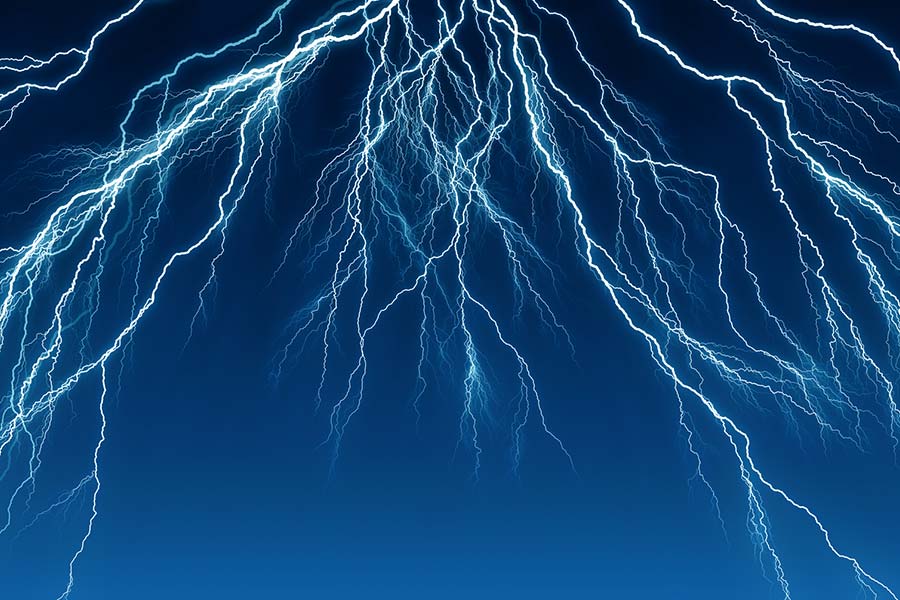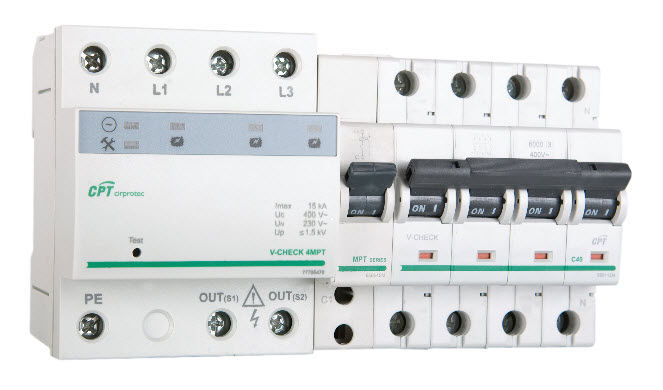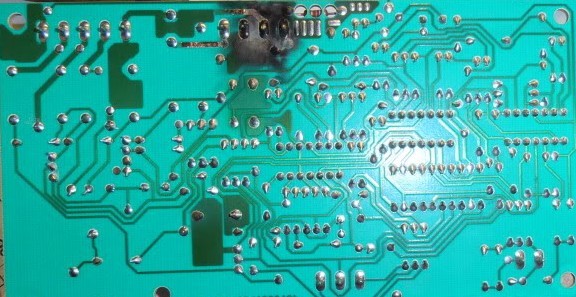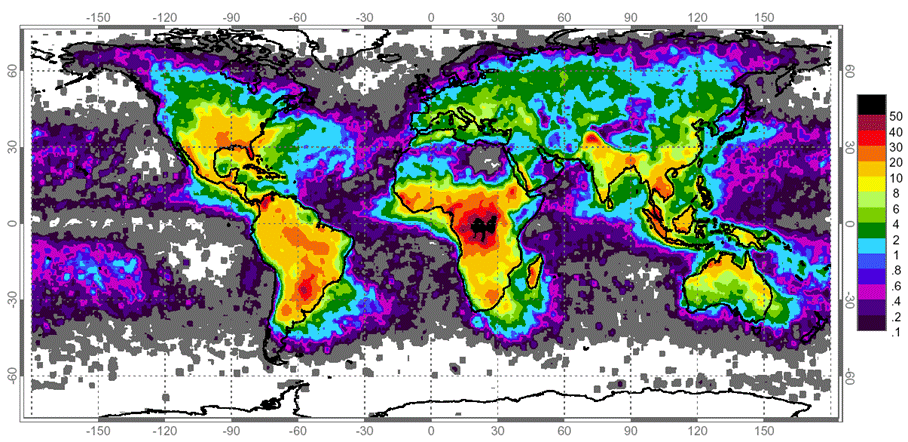A surge protective designed to protect electrical devices from voltage spikes. A surge protector attempts to limit the voltage supplied to an electric device by either blocking or shorting to ground any unwanted voltages above a safe threshold.
Lightning strikes, and other transient surges are the main causes of electrical device failure, down-time and loss of productivity. Protection against these over-voltages should be a fundamental part of our electrical system configurations.
Common causes of electrical surges are:
[item url=”” url_target=”new_window” icon=”bullet” text_color=””]20% external disturbances e.g. Utility load switching and lightning strikes[/item][item url=”” url_target=”new_window” icon=”bullet” text_color=””]80% internal disturbances e.g. load switching, variable frequency drives, lighting and air handlers[/item][/items_list]
It doesn’t have to be a single large surge to cause instant damage to electrical components. There are always many smaller frequent surges on the electrical system that will still cause disruptions in computer signals and processors, and these will degrade component junctions over time causing ‘random’ delayed failure.
The installation of Surge & Lightning protection which is easily fitted by a qualified electrician:
[item url=”” url_target=”new_window” icon=”bullet” text_color=””]Avoids installation damages[/item][item url=”” url_target=”new_window” icon=”bullet” text_color=””]Prolongs the life span of transformers and sensitive site equipment[/item][item url=”” url_target=”new_window” icon=”bullet” text_color=””]Reduces system disturbances[/item][item url=”” url_target=”new_window” icon=”bullet” text_color=””]Reduces maintenance costs and equipment replacements[/item][/items_list]
Device Types:
[item url=”” url_target=”new_window” icon=”bullet” text_color=””]Type 1 device 10/350(µs)[/item][item url=”” url_target=”new_window” icon=”bullet” text_color=””]Type 2 device 8/20(µs)[/item][item url=”” url_target=”new_window” icon=”bullet” text_color=””]Type 3 device 8/20 1.2/50(µs)[/item][/items_list]
Type 1 device 10/350(µs) should be installed in Lightning Protection Zone 1 (First point of entry into a building off the grid).
Type 2 device 8/20(µs) should be installed in Lightning Protection Zone 2 (sub distribution panel boards) where sensitive electronic equipment and power distribution is critical for the continuation of services.
Type 3 device 8/20 1.2/50(µs) should be installed in Lighting Protection Zone 3 (at the final end circuits) and is critical in preventing damage to items such as file servers, data communication systems, sensitive computer interfaces, CCTV, BMS systems and similar.
We offer a full range of Type 1, Type 2 and Type 3 Lightning & Surge arrestor products including AC and DC versions for solar installations and all available through your local electrical wholesalers.




